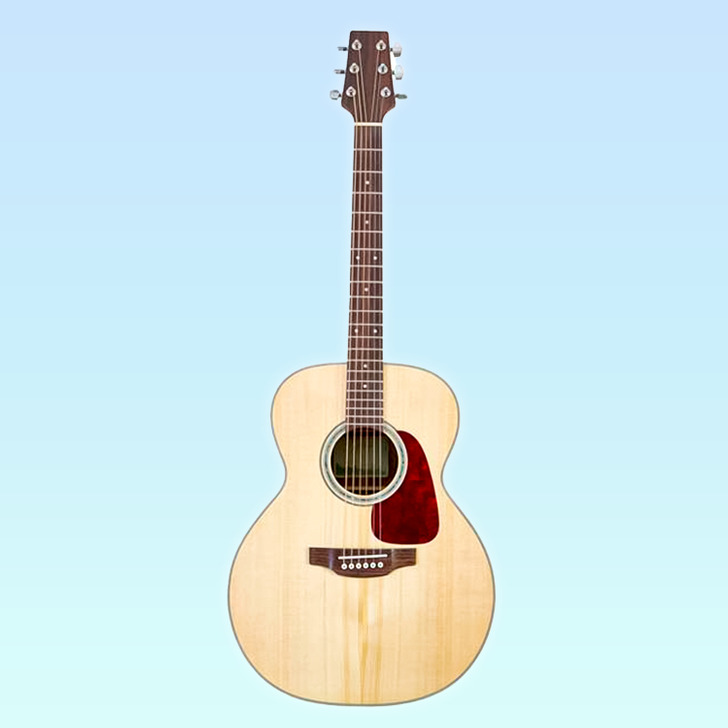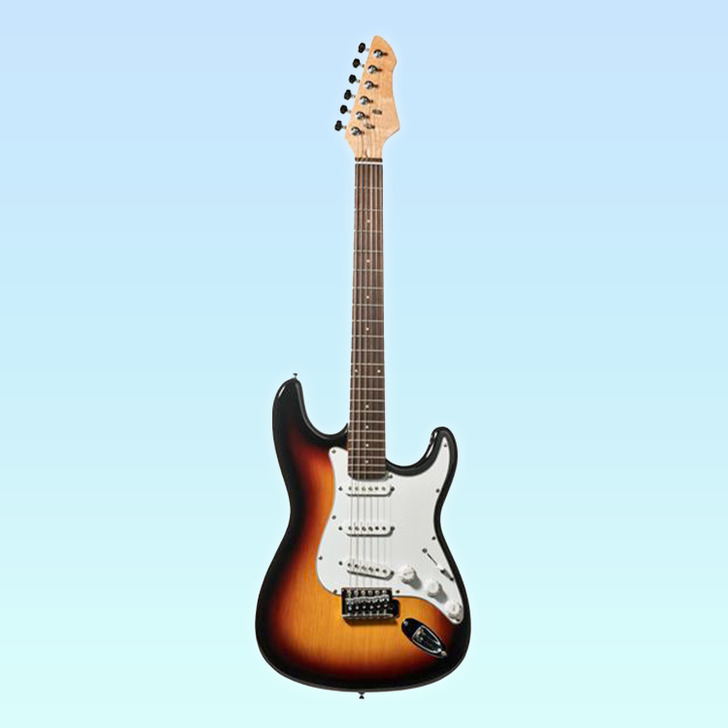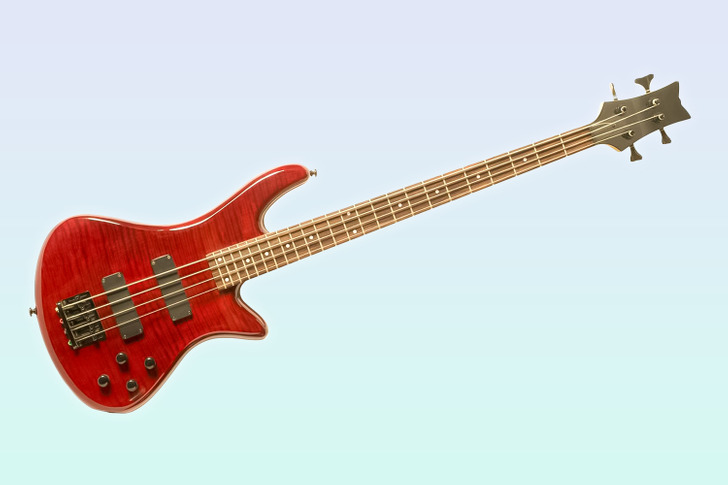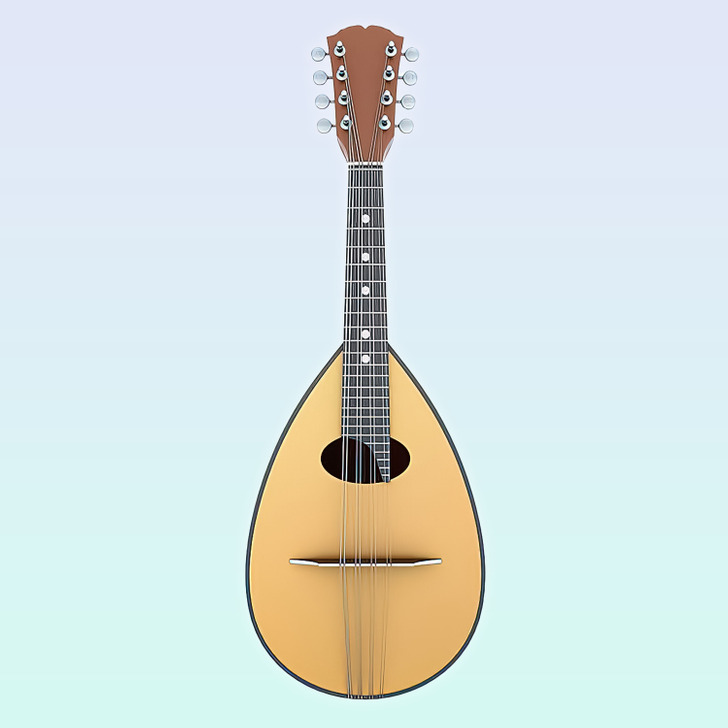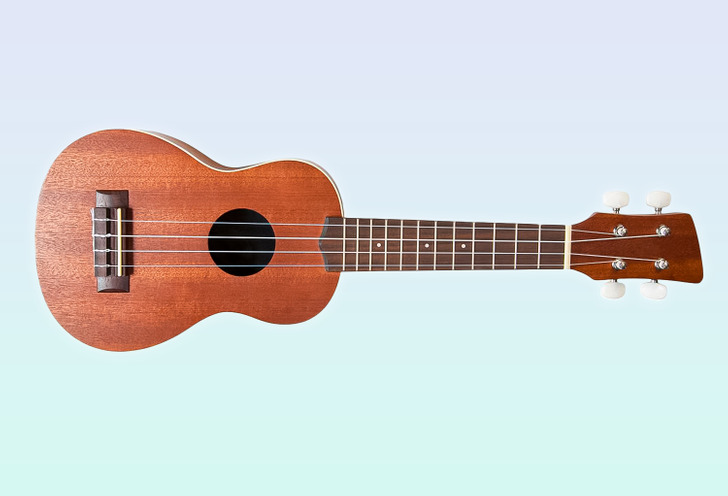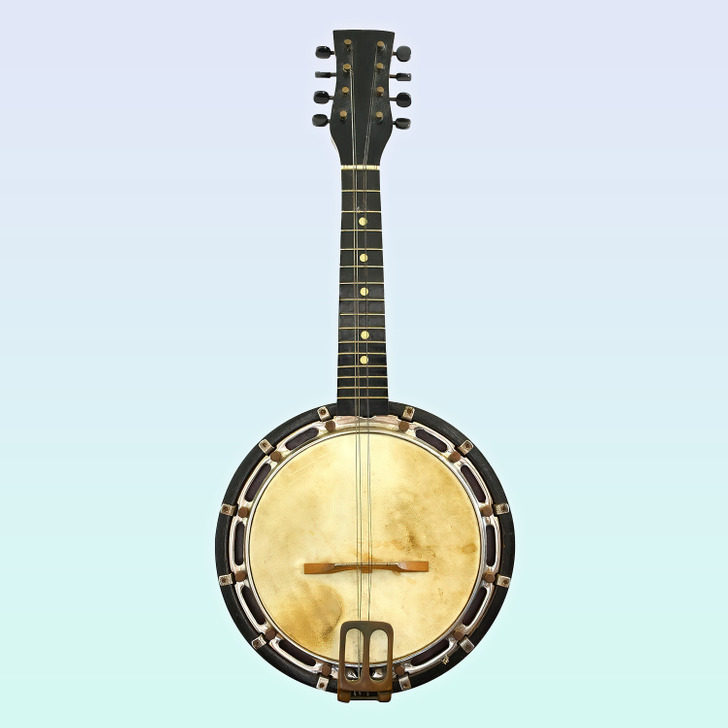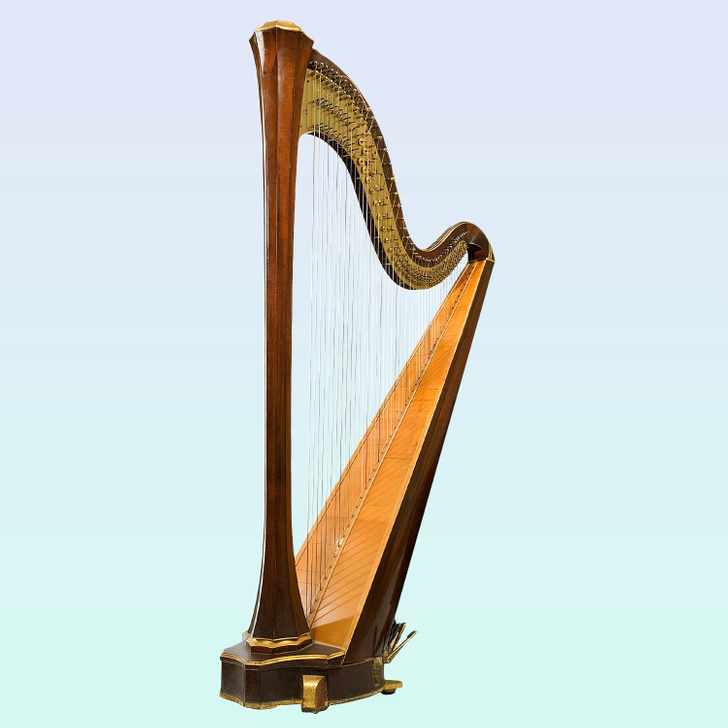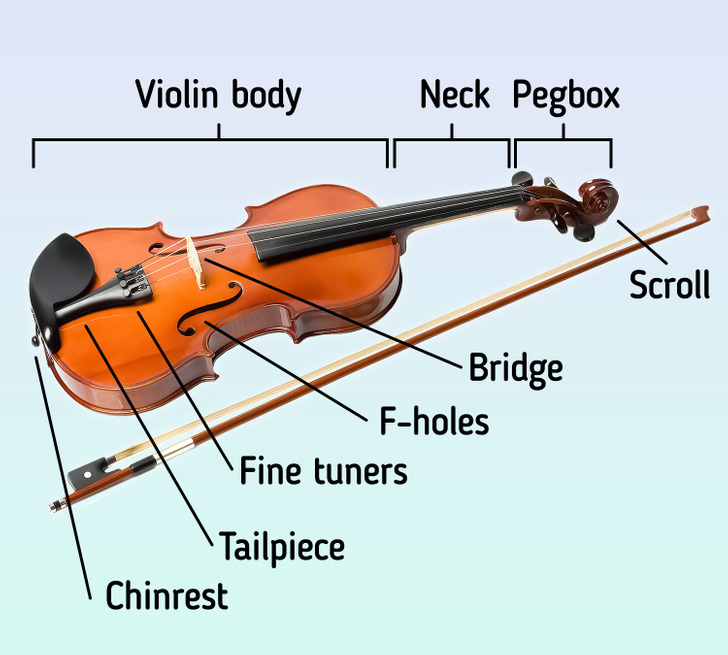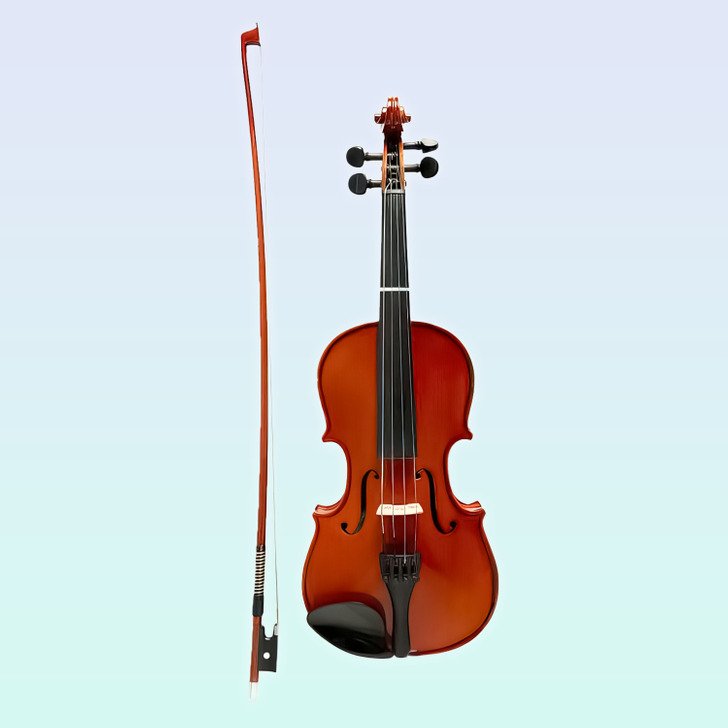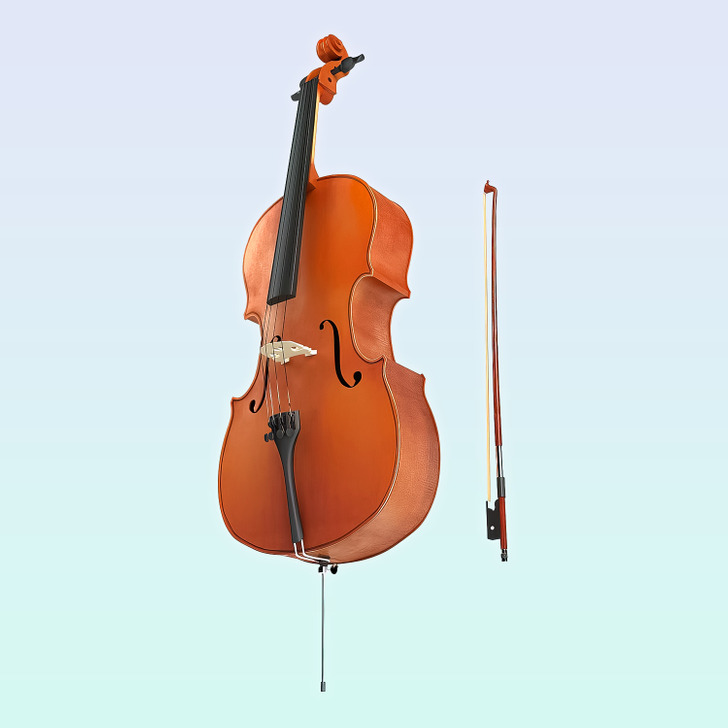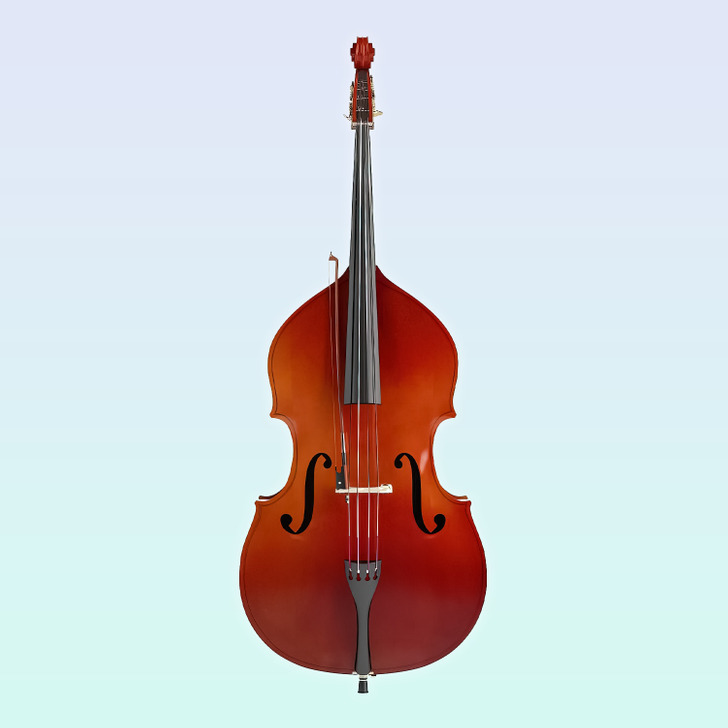A Guide to Stringed Musical Instruments
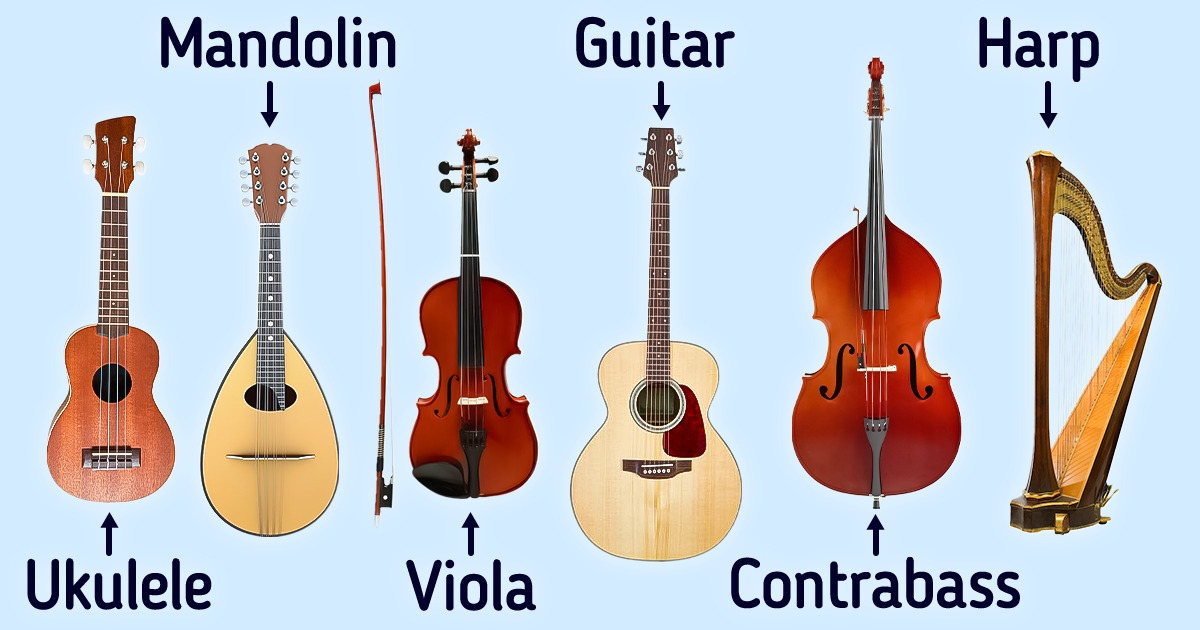
String instruments are among the most popular for those who want to play them and for music lovers. They include many different variants, and that’s why 5-Minute Crafts has made a list of the most common stringed instruments, together with their characteristics.
1. Plucked (or Picked) String Instruments
Guitar
The guitar is one of the most popular string instruments. There are acoustic and electric guitars and both of these types are built in the same way.
- They have a body to which the neck of the instrument is attached. The wires are fastened to the bridge of the body at one end. The tuning machines (headstock) are attached at the end of the neck. A fretboard is on the neck with metal frets on it.
- Strings on the guitar are plucked or picked to produce sound. For this, the musician can use his fingers or a plectrum (guitar pick). When pressing an individual string on a particular fret, the length of the string that vibrates is shortened, and thus a higher pitch is obtained. Harmonies can be played both “vertically” or “horizontally.” All this makes the guitar a good choice for a leading and backing instrument.
The difference between an electric and an acoustic guitar is that:
- The electric guitar has electromagnetic pickups and sometimes piezoelectric pickups. They convert the vibration of the steel strings into signals, and they are then fed to an amplifier through a patch cable or a radio transmitter.
- The sound can then be changed using other electronic devices, like the natural distortion of valves (vacuum tubes), or the pre-amp in the amplifier.
Bass guitar
Bass guitar is a crucial instrument for almost every modern musical style.
- This instrument as we know it today was created in the ’50s of the last century. Bass guitar is also called electric bass or, simply, bass.
- The bass is similar in appearance and construction to an electric guitar, but it has a longer neck and a scale length. The most common bass is the 4-string bass and it is usually tuned the same as the double bass (E, A, D, and G).
- The bass guitar has pickups, just like the electric guitar, and it is plugged into an amplifier and speaker for live performances.
- Mostly these instruments can be plucked using the fingers but also with different guitar picks.
Mandolin
The mandolin belongs to the lute family.
- It is a stringed instrument with a neck, body, and frets. It comes with string courses, which are essentially doubled strings. Both strings are tuned to the same note, this is what makes them very different. Mostly mandolins have 8 strings, with 4 courses of 2 strings.
- This instrument has its roots in traditional Western European instruments like the gittern, lute, and mandola. The widespread types are Neapolitan and Lombardic.
Ukulele
Today the ukulele is popular again because of its simplicity and how easy it is to play.
- The ukulele originated from the Portuguese guitar-like instruments, commonly known as “machetes.” In the second half of the 19th century, the ukulele developed in Hawaii and is considered a traditional instrument.
- This instrument looks like a mini-guitar and only has 4 strings, usually made of nylon.
Banjo
A banjo is similar in appearance and construction to a guitar.
- This instrument, like the guitar, also has a body, a neck, a headstock at the end of the neck, a bridge on the body, and strings that are pressed on a fretboard. What’s different about the banjo is that it has, in most cases, an open backside. This allows the instrument to resonate in its unique way. Also, the body consists of a frame that has a thin membrane on top of it.
- The traditional banjo has 4 strings, while newer ones have 5. These newer ones have a so-called “drone” string. The fifth string, in most cases, only starts from the fifth fret, which is where its tuning machine is located as well. The bottom fifth string is mostly the same gauge and tuning as the first string.
Harp
The harp is a very simplified instrument and is thousands of years old.
- This instrument has no neck, and in addition, each string has its own pitch. The strings are all placed at an angle to its soundboard, and the only way to change their pitch is to use levers or pedals. Because of that, harps are much more expensive than other string instruments.
2. Bowed String Instruments
Violin
The violin is one of the most famous string instruments.
- The modern violin appeared in northern Italy during the 16th century.
- The violin body has a resonant chamber that is attached to a neck. Tuning pegs are located at the end of the neck on a pegbox. A tailpiece with fine tuners is located at the end of the violin body. Also, on the body, there are F-shaped sound holes. The size of a typical violin is 2 feet (61 cm) long with a slightly longer bow. Violins are fretless instruments.
- The violin is played by resting it between the chin and the left shoulder. The left hand holds the neck of the violin and presses down on the strings to change the pitch, while the right hand moves the bow or plucks the strings. There can be up to 34 violins in one orchestra and they are divided into 2 groups: the first and the second.
- There are also electric violins with piezo pickups. Modern bands with violinists use these electric ones more because of their practicality.
Viola
The viola is almost identical to the violin.
- This instrument is slightly bigger, at a little over 2 feet long (61 cm), and has a lower pitch. It has thicker strings which allow it to produce a richer, warmer sound than the violin.
- The viola is played the same way as the violin, and it’s often used as an accompanying instrument. There are usually 10 to 14 violas in an orchestra, and they traditionally play in Alto Clef.
Cello
The instrument name comes from the Italian word violoncello, which translates to little violone.
- The cello resembles the violin and the viola but is considerably larger than they are, about 4 feet long (122 cm). It has 4 thicker strings than those on the violin and viola, and it’s tuned exactly one octave below the viola. The cello is most reminiscent of the human voice (tenor) and can create a wide range of tones, from warm low pitches to bright higher notes. It’s a fretless instrument.
- This instrument is played by sitting and holding it vertically between the legs. There are usually 8 to 12 cellos in an orchestra, and they play both melody and harmony. The cello usually serves a backing role, but it can also be a lead instrument as well.
Contrabass
The name for a double bass is also contrabass, or just a bass.
- It’s the largest bowed instrument at over 6 feet long (183 cm). Also, it is the lowest-pitched one. The contrabass originated, like the cello, from the violin. It has 4 strings and is tuned the same way as a standard bass guitar. The body of the double bass stands on the ground, the same as the cello, supported by a metal peg, and the neck rests on the left shoulder.
- Sound is produced by the left hand, which changes pitch and the right to move the bow or pluck the string. There are usually 6 to 8 double basses in an orchestra and they usually always play harmony.
